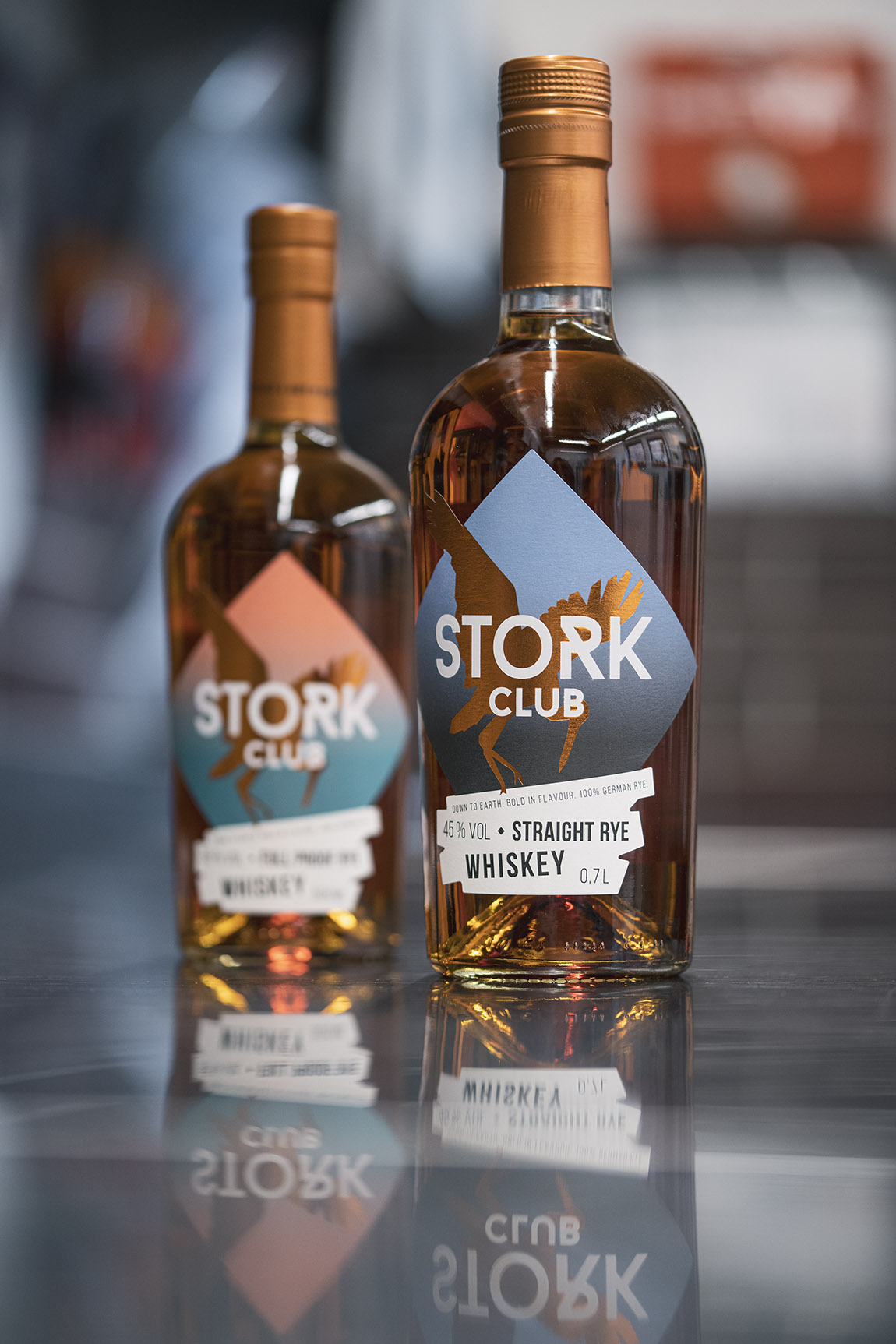German Whiskey Takes Off: How local distilleries are starting to be noticed
TEXT: DAN COLE | PHOTOS: STORK CLUB / KATJA HIENDLMAYER

Although relatively new to the international market, German whiskey is gaining international recognition thanks to innovative production techniques and styles. Talking to Bastian Heuser from Stork Club distillery, we found out how German whiskey has gained such popularity.
When thinking of Germany, one often associates the likes of wines and beer when it comes to the country’s national beverage of choice. Recently, however, whisky production has been gaining popularity, with many of the distilleries gaining recognition across the continent, and winning many awards.
It shouldn’t come as a surprise. Germany at present has twice as many distilleries as Scotland, with the number rising year on year. With distilleries that are often smaller in scale when it comes to its international counterparts, the country takes a less traditional approach when it comes to manufacturing, creating more varied products.

While Blaue Maus is often cited as the first German whiskey brand to enter the market, back in 1983, it’s the most recently founded distilleries which have been gaining all the attention. Established, and award-winning brands such as SLYERS, Elsburn, and St. Kilian, have been flying the flag for German whiskey over the past two decades.

SLYERS in particular, distilled in southern Germany, is recognised as being the country’s most prominent and successful whiskey brand. Founded around the turn of the century the distillery even has a cask storage facility on a mountain peak, located at over 1,500m above sea level. It’s this region of Germany that has been critical for the whisky industry.
“It all started with fruit brandy, schnapps distillers in the southern part of Germany who started producing a few casks of whiskey on the side,” explains Bastian Heuser, one of the founders of Stork Club, a rye whisky distillery based in the state of Brandenburg.

Stork Club have been distilling rye whiskey in the Spreewald Reserve since 2016. The brand has become one of the best recognised whiskey manufacturers in the region, even going as far as receiving the World’s Best Rye Whiskey award at the World Whiskeys Awards.
In an ever-increasing competitive market with new and developing territories vying for shelf space, it can be difficult to stand out. Stork Club took a very unique approach in order to put themselves on the whiskey-world map.
“For us, we focused on rye, which we believe is especially German,” explains Heuser. “Every German grows up on rye bread, so we thought that should be our niche. It works as a strong European alternative to American whiskey, and works well in cocktails.”

Although more popular Stateside, rye whisky is still quite a unique property in Europe, with few distilleries using the grain. The most popular of which is in Finland called, Kyrö, with other brands such as Stauning in Denmark, and Arbikie in Scotland.

Stork Club also sticks out thanks to its unique artwork, with an image of a stork attached to all products. The stork is especially prevalent as it nests annually in the Spreewald region where the distillery can be found. Stork Club also found success by reaching out across the aisle and collaborating with other brands. Amongst their product range is a Beer-Barrelled edition made in collaboration with Heidenpeters, a Ryezcal with Mezcal San Cosme, and even a newer peanut flavour edition.

“Everything has to be taken in decades with whiskey,” explains Heuser, when asked about the manufacturing process. Many countries have very strict rules regarding production and style, when it comes to their whiskies. Although Germany is a little bit more flexible with their rules, their whisky must be distilled for at least three years in oak barrels. This has a lot to do with Germany’s more temperamental climate conditions, which give the industry more of an advantage.

“We get quite hot summers, and cold winters, which differs a lot from Scotland,” Heuser explains. “This creates an expansion of the alcohol in the casks, which means you do not need to age as long, like they do in Scotland for instance.”
Another thing that sets German whiskey apart from its competitors is the type of casks used. Unlike in Scotland, where everything has to be aged in oak casks, German distilleries have more flexibility when it comes to the type of woods they use. “For us, we use a lot of virgin American and German oak as our casks, as well as walnut, cherry, and other woods, which scotch whiskey distillers can not do.” explains Heuser. “With using different casks, we can achieve a totally different flavour profile that’s more interesting.”

Once distilled, then comes the aging. “We have some more premium-aged products that have reached five years as a minimum age, and we are launching a limited edition that’s seven years old.”
Even though the German market is developing at a fast rate, there are still many opportunities and challenges ahead for many of the manufacturers.

“It’s going to be an interesting time,” Heuser comments, when asked about the future. “We need to communicate better to the German consumer, because Germans are very price driven, especially if it’s not a car. But if it comes from your own country, it’s normally well received.”

One of the steps Stork Club has taken to help push their product further, is the opening of a new bar and micro-distillery in Berlin. The House of Rye is located in the trendy district of Kreuzberg, just 100km away from their distillery. The bar is open to tasting and private events, and hopes to push the brand further in the nation’s mind. The company is also aging a limited edition, Berlin whisky on site.
“The consumers are finding it awesome, and are really supportive,” Heuser explains about the new location. “We’ve had pop-up events, tours and tastings, and now we’re really starting to get traction in Berlin.”

Subscribe to Our Newsletter
Receive our monthly newsletter by email




